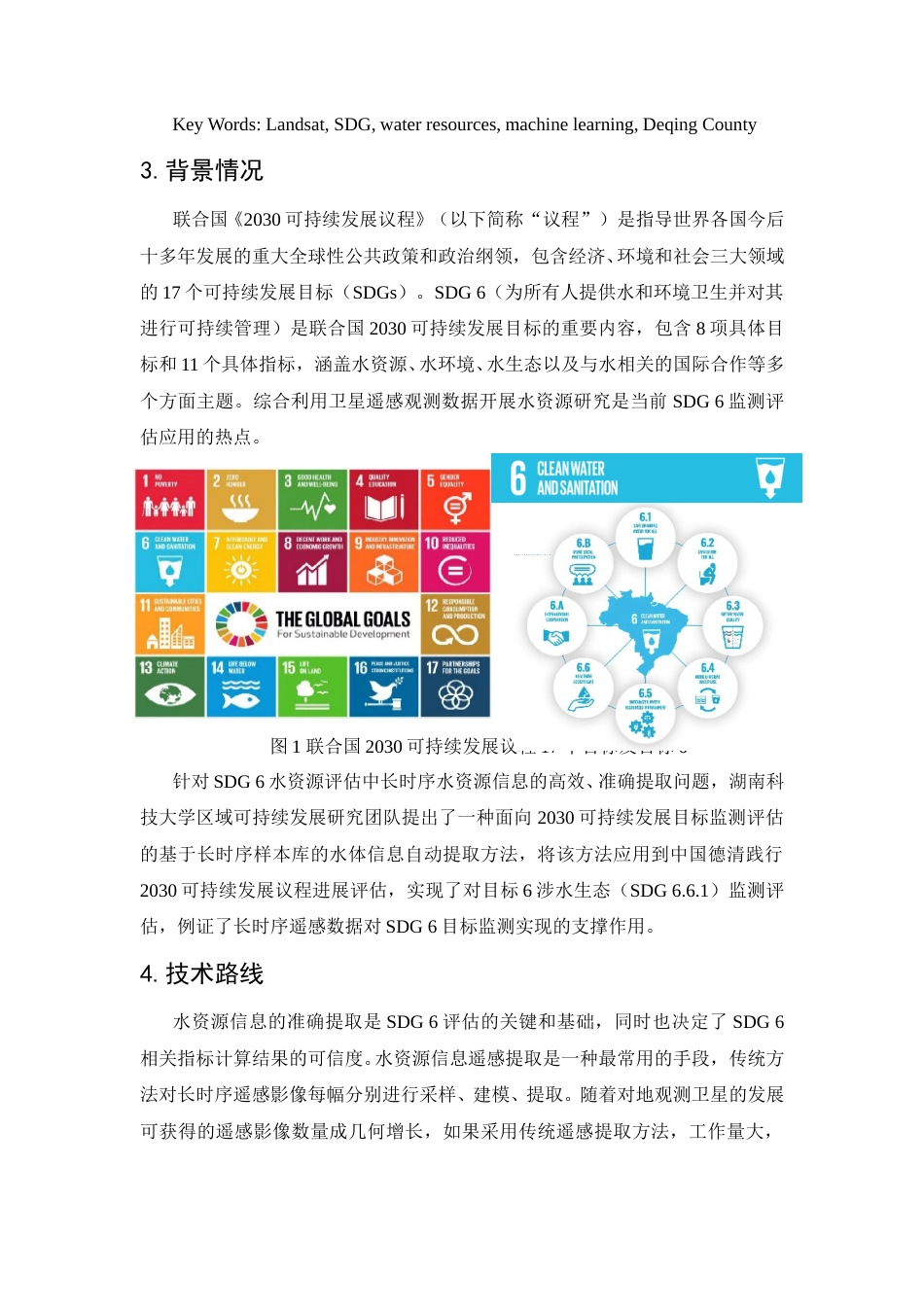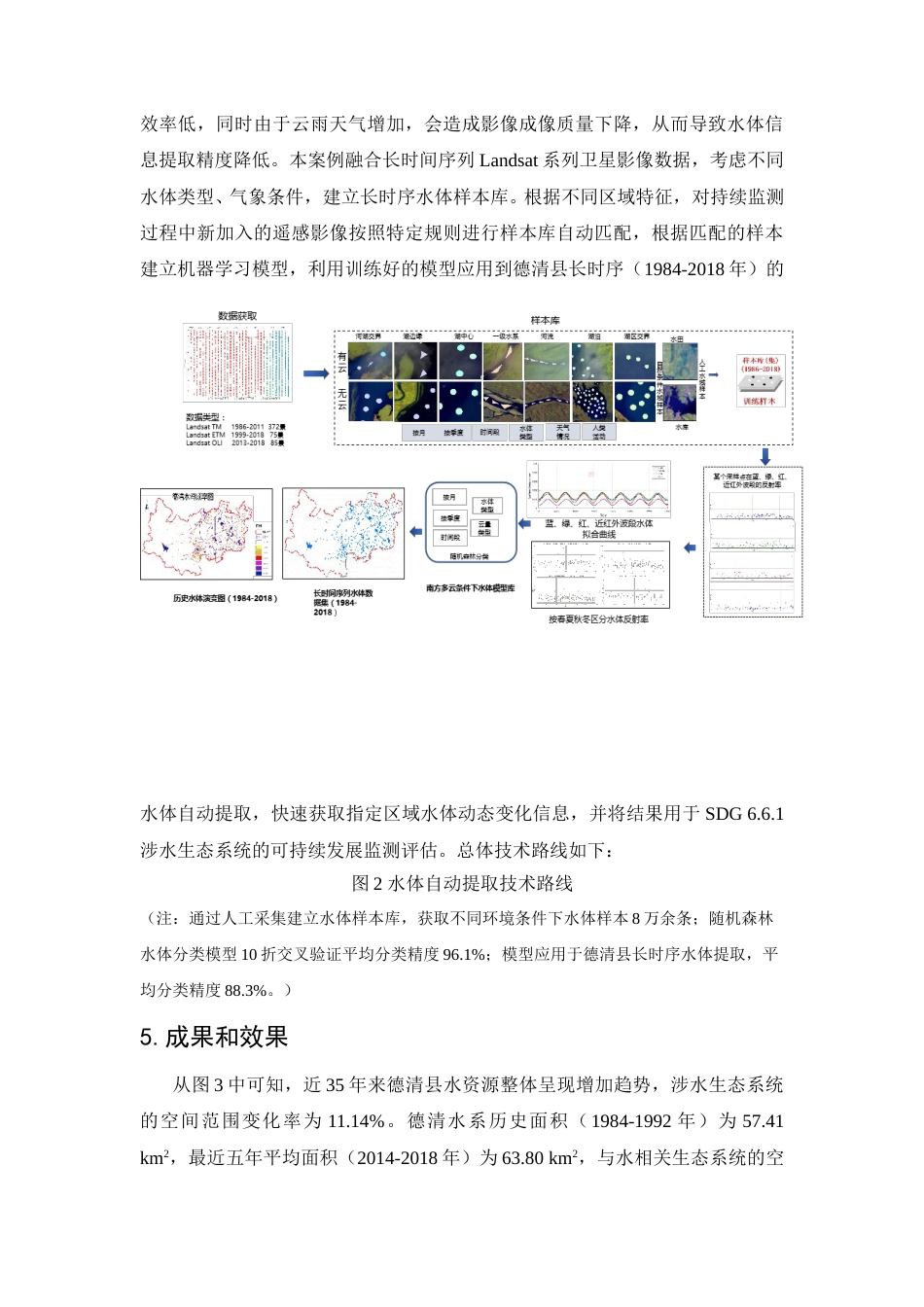面向 2030 可持续发展目标评估的长时序水体遥感提取陈浩1,彭焕华2(湖南科技大学区域可持续发展研究院)1.案例摘要水是人类活动和社会经济发展的根源。水资源信息的高效、准确提取是实现联合国 2030 可持续发展议程(SDG)目标 6 “为所有人提供水和环境卫生并对其进行可持续管理”指标监测评估的关键。本案例通过长时序水体样本库建立机器学习模型,将模型应用到中国德清近 34 年水体自动提取,实现对目标 6 涉水生态(SDG 6.6.1)监测评估。相关结果纳入《德清践行联合国 2030 可持续发展议程进展报告(2017)》和“中国(德清)可持续发展目标知识服务系统”,为联合国 SDG 6 指标监测落实提供中国德清经验。Abstract: Water is an essential resource for human activities and socio-economicdevelopment. Efficient and accurate extraction of water resources information is acritical component of assessing the indicators of the United Nations SustainableDevelopment Goal (SDG) 6 "Ensure availability and sustainable management ofwater and sanitation for all". In this case, a long time-series water body sampledatabase was used to train machine learning models of automatic extraction of waterbodies. The indicators achieved of water bodies changes of wading ecology(SDG6.6.1) in Deqing County were assessed by using this model from 1984-2018.Results were included in the "Progress Report of Deqing on the Implementation of theUnited Nations 2030 Agenda for Sustainable Development (2017)" and "China(Deqing) Sustainable Development Goals Knowledge Service System", whichprovides the “Deqing Example” for the monitoring and implementation of the SDG 6.2.案例元信息及关键词中文:Landsat 卫星,2030 发展议程,水资源,机器学习,德清县1 陈浩(1979-),男,副教授,湖北荆州人,湖南科技大学区域可持续发展研究院副院长2 彭焕华(1984-),男,副教授,湖南株洲人,湖南科技大学区域可持续发展研究院教师Key Words: Landsat, SDG, water resources, machine learning, Deqing County3.背景情况联合国《203...



